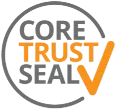
What are Research Data?
Research data can be made up of all kinds of research materials, including lists, annotations, images, recordings, and more.
DRI’s guide to creating and maintaining FAIR and Open Research data in the Humanities, Social Sciences and Cultural Heritage
The Digital Repository of Ireland (DRI) preserves and provides access to digital objects from cultural heritage institutions across Ireland, and works with research-producing institutions to provide support in disseminating and preserving research outputs in line with the internationally recognised FAIR data principles. The DRI also acts as the national node for the Research Data Alliance (RDA) in Ireland and is responsible for the promotion of RDA activities across Ireland.
DRI is committed to promoting best practices in research data management, with DRI staff offering training and support on these topics to member institutions.
DRI is funded by the Department of Further and Higher Education, Research, Innovation and Science (DFHERIS) via the Higher Education Authority (HEA) and the Irish Research Council (IRC).



